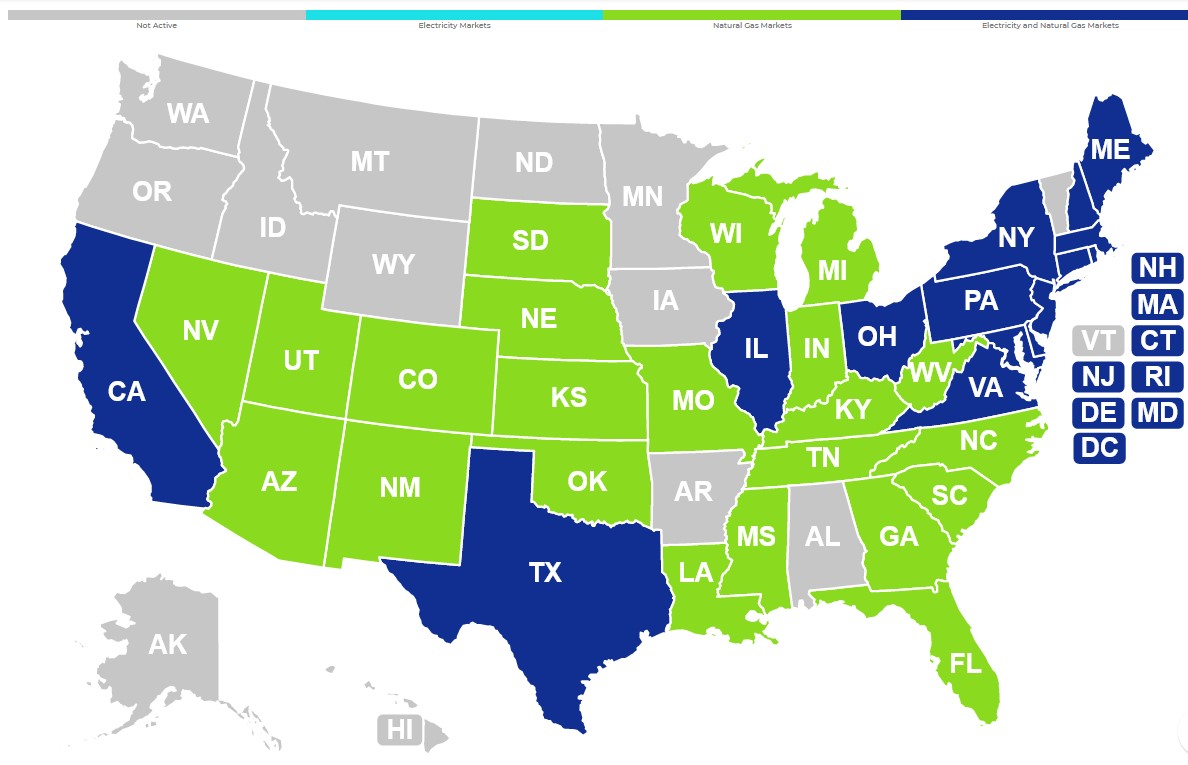Commercial Electricity Understanding Pricing Factors and Key Considerations

Commercial Electricity Rates in the US: Understanding Pricing Factors and Key Considerations
Commercial electricity rates in the United States play a crucial role in determining the cost of powering businesses across various industries. Understanding the factors that influence these rates is essential for businesses seeking to manage their energy expenses effectively. In this article, we will delve into the concept of commercial electricity rates in the US, exploring the key factors that contribute to pricing variations. We will address commonly asked questions and provide examples to illustrate how different factors impact commercial electricity rates. By gaining insights into the dynamics of commercial electricity pricing, businesses can make informed decisions to optimize their energy costs and enhance their competitiveness in the market.
What are commercial electricity rates?
Commercial electricity rates refer to the cost per unit of electricity consumed by businesses. These rates are set by utility companies and can vary based on a range of factors, including geographic location, market conditions, regulatory policies, and the specific needs of businesses. Commercial electricity rates are typically higher than residential rates due to the higher energy consumption and specialized requirements of commercial operations.
For instance, in a specific state, the commercial electricity rate may be $0.12 per kilowatt-hour (kWh), while the residential rate in the same area might be $0.10 per kWh. This illustrates the distinction between commercial and residential rates and the higher cost businesses typically incur for electricity.
What factors influence commercial electricity rates?
Commercial electricity rates are influenced by several key factors that contribute to pricing variations across different regions and industries. Understanding these factors can help businesses anticipate and manage their electricity costs effectively.
a. Supply and Demand:
The balance between electricity supply and demand in a specific region can impact commercial rates. During peak demand periods, when the demand for electricity is high, rates may be higher due to increased strain on the power grid and the need for additional resources to meet the demand.
For example, during the hot summer months, when air conditioning usage is at its peak, the demand for electricity in commercial buildings, such as office spaces and retail stores, increases significantly. As a result, utility companies may charge higher rates during these periods to manage the increased demand.
b. Fuel Costs:
The cost of fuels used for electricity generation, such as natural gas, coal, oil, or renewable sources, can affect commercial electricity rates. Fluctuations in fuel prices, influenced by market conditions and supply and demand dynamics, can impact the overall cost of electricity production.
If the price of natural gas, a commonly used fuel for electricity generation, increases due to changes in the global market or supply disruptions, utility companies may pass on the increased costs to commercial consumers, resulting in higher electricity rates.
c. Infrastructure and Distribution Costs:
The cost of maintaining and upgrading the electricity infrastructure, including transmission lines, substations, and distribution networks, is factored into commercial electricity rates. The distance between power generation facilities and commercial establishments, as well as the complexity of the distribution network, can affect these costs.
In rural areas where businesses are located far from power generation sources, the cost of transmitting and distributing electricity over long distances may be higher. Consequently, commercial electricity rates in these areas may be higher compared to urban or densely populated regions.
d. Energy Regulatory Policies and Taxes:
Government Energy regulations, taxes, and fees imposed on electricity providers can influence commercial electricity rates. These factors vary from state to state and can include renewable energy mandates, carbon emission regulations, and other environmental or infrastructure-related charges.
A state with more stringent renewable energy targets may require electricity providers to generate a certain percentage of their electricity from renewable sources. Compliance with these regulations may require additional investments in renewable energy infrastructure, which can impact commercial electricity rates. Time of Use (TOU) Pricing: Some utility companies offer time-of-use pricing, where electricity rates vary based on the time of day. This pricing structure encourages businesses to shift their energy usage to off-peak hours when electricity demand is lower, thereby reducing strain on the grid during peak periods.
Under a time-of-use pricing plan, electricity rates may be higher during weekday afternoons when commercial activity is at its peak, but lower during evenings or weekends when demand is lower. Businesses that can shift their operations or implement energy management strategies to reduce usage during peak hours can benefit from lower rates.
f. Contractual Arrangements:
The terms of the contract between the business and the electricity provider can impact commercial electricity rates. Contracts may include fixed or variable rates, long-term agreements, or special pricing incentives based on the business's energy consumption or load characteristics.
A business that signs a long-term contract with a fixed-rate agreement may enjoy stable and predictable electricity rates over the contract duration, providing cost certainty and protection against market fluctuations.
How do different industries and business sizes affect commercial electricity rates?
The industry and size of a business can significantly influence commercial electricity rates. Industries with higher energy demands or specialized electricity requirements may experience different pricing structures compared to businesses with lower energy needs.
a. Energy-Intensive Industries:
Industries that rely heavily on electricity in their operations, such as manufacturing, mining, or data centers, often have higher electricity rates. These industries have substantial energy demands due to machinery, equipment, or cooling requirements, which result in increased electricity costs.
For example a steel manufacturing plant with extensive production lines, electric furnaces, and large-scale machinery may have higher electricity rates compared to a small retail store due to its significant energy consumption.
b. Small and Medium Enterprises (SMEs):
Small and medium-sized businesses often face higher electricity rates compared to larger enterprises due to economies of scale. SMEs typically have lower energy consumption and may not have the negotiating power to secure favorable pricing agreements.
A small boutique clothing store with limited square footage and fewer electrical appliances may have higher electricity rates per unit compared to a large department store chain that can leverage its size and negotiate lower rates.
c. Seasonal Industries:
Industries with seasonal variations in demand, such as hospitality (hotels and resorts) or agriculture, may experience fluctuations in commercial electricity rates. During peak seasons, when energy demands are high, rates may increase to accommodate the temporary surge in electricity consumption.
A ski resort that operates primarily during the winter season may experience higher electricity rates during that time due to the increased energy demands for heating, lighting, snowmaking equipment, and other facilities.
d. Geographical Location:
Commercial electricity rates can vary based on the geographic location of the business. Factors such as transmission costs, regional energy policies, fuel availability, and the mix of energy sources in a particular region can influence electricity rates.
Electricity rates in a coastal area with abundant wind resources and a well-established wind energy infrastructure may be lower compared to an inland region that relies heavily on fossil fuel-based electricity generation.
How can businesses manage and optimize their commercial electricity costs?
Businesses can implement various strategies to manage and optimize their commercial electricity costs, considering the factors discussed above. Here are some key approaches:
a. Energy Efficiency:
Investing in energy-efficient equipment, adopting energy-saving practices, and conducting regular energy audits can significantly reduce electricity consumption and lower costs.
Installing LED lighting, upgrading to energy-efficient appliances, and implementing HVAC controls and automation systems can lead to substantial energy savings and cost reductions.
b. Load Management:
Shifting energy usage to off-peak hours, optimizing production schedules, and implementing demand response programs can help businesses reduce electricity costs. By strategically managing their energy consumption, businesses can take advantage of lower rates during off-peak hours.
A manufacturing facility can adjust its production schedule to run heavy machinery during off-peak hours when electricity rates are lower, thereby reducing energy costs.
c. Renewable Energy Adoption:
Exploring renewable energy options, such as installing solar panels or procuring renewable energy from suppliers, can provide long-term cost savings and support sustainability goals.
A commercial building can install rooftop solar panels, generating a portion of its electricity on-site and reducing dependence on grid power, resulting in lower electricity costs.
d. Energy Monitoring and Management Systems:
Implementing energy monitoring systems allows businesses to track and analyze their energy consumption patterns in real-time. This data can help identify energy-saving opportunities and optimize energy usage.
A hotel chain can use an energy management system to monitor and control lighting and HVAC systems in guest rooms, ensuring energy is only consumed when needed and reducing unnecessary usage.
e. Negotiating Supplier Contracts:
Carefully reviewing and negotiating electricity supply contracts with multiple suppliers can help businesses secure competitive rates, favorable terms, and discounts.
A retail chain can compare offers from different electricity providers and negotiate a contract that offers lower rates based on their projected energy consumption.
f. Employee Engagement and Education:
Promoting energy-saving practices among employees and raising awareness about the importance of energy efficiency can lead to behavioral changes that contribute to cost reductions.
An office building can implement an employee engagement program, encouraging staff to turn off lights and equipment when not in use, resulting in energy savings and reduced electricity costs.
Find commercial electricity rates in the US are influenced by various factors, including supply and demand dynamics, fuel costs, infrastructure expenses, regulatory policies, and business-specific considerations. Understanding these factors is crucial for businesses seeking to manage and optimize their electricity costs effectively. By implementing energy efficiency measures, adopting renewable energy solutions, leveraging time-of-use pricing, and exploring contract negotiation opportunities, businesses can take control of their electricity expenses. Strategic management of energy consumption, load shifting, and employee engagement can also contribute to significant cost savings. Staying informed about market trends, regulatory changes, and emerging technologies can help businesses stay ahead in managing their commercial electricity costs, enhancing their financial sustainability, and supporting their overall business objectives.
